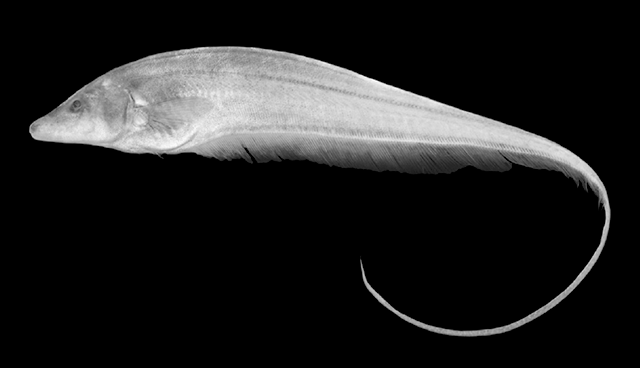| Sternopygidae (Glass knifefishes) |
| 49.7 cm TL (male/unsexed) |
|
benthopelagic; freshwater |
| South America: Rio Jari, Rio Trombetas and Rio Tapajós basins in eastern Amazon; Rio Araguari, Brazil. |
|
Anal soft rays: 192-213. Distinguished by having the following combination of characters: depth of the caudal filament 3.3-4.8% CL; length of the caudal filament 28.6-46.1% LEA; length of the coronomeckelian bone 50% or more the length of Meckel’s cartilage; length of the posterior ceratohyal approximately the same length as the ventral hypohyal; gape relatively long and the rictus extending posteriorly beyond the vertical through the posterior naris; teeth between seven and ten irregularly distributed on the internal surface of the endopterygoid; anteroposterior length of premaxilla greater than the transverse width; teeth on the dentary restricted to the anterior one-half or slightly more of the dorsal margin; presence of a narrow dark stripe along the lateral line and a broad band of dusky to dark pigmentation overlying the basal pterygiophores of the anal fin; 19-21 pectoral-fin rays; and 192-213 anal-fin rays (Ref. 93148).
Description: Pectoral-fin rays ii, 17- ii, 19; anal-fin unbranched rays 22-32 and total rays 192- 213 (Ref. 93148). |
| Occurs in swift-flowing water habitats. Also found in main stream of shallow rapids and
small waterfalls, always over a rocky bottom (Ref. 93418). |
|
Least Concern (LC); Date assessed: 07 November 2018 Ref. (130435)
|
| harmless |
Source and more info: www.fishbase.org. For personal, classroom, and other internal use only. Not for publication.

